Harnesses, Collars & Leashes: Top Picks for Dogs
When it comes to walking your pup, the right gear makes all the difference. Dog owners often debate between harnesses, collars and leashes for dogs, but the truth is every dog is different. Some pull like they’re in a sled race, while others stroll calmly like little angels. Finding the perfect match for your dog’s personality, breed, and daily routine isn’t just about comfort — it’s also about safety. In this blog, we’ll break down the pros, cons, and real-life uses of harnesses collars and leashes for dogs, while sharing tips from pet experts and everyday dog parents.
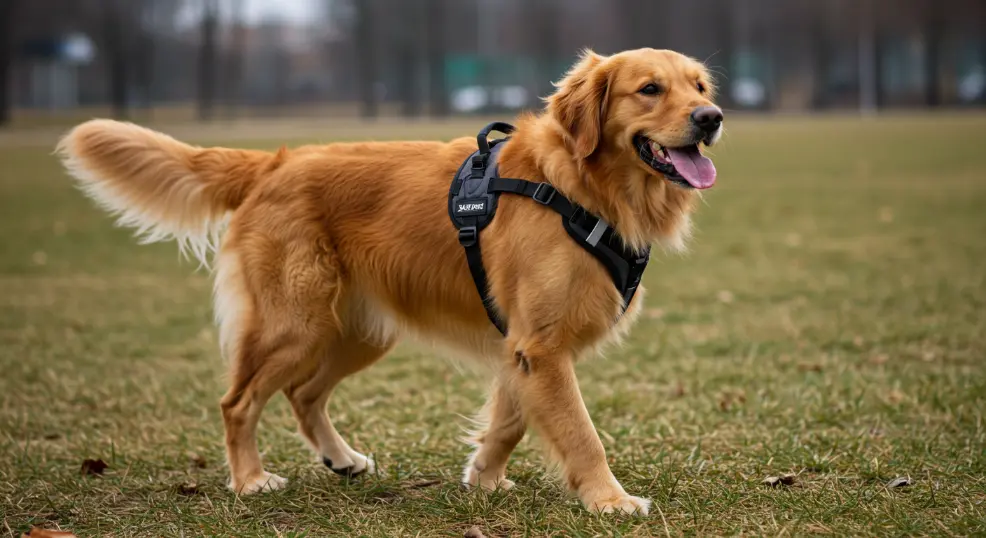
Why the Right Gear Matters
Walking a dog sounds simple, but ask anyone who has been dragged across the street by a 70-pound Labrador — gear matters! Harnesses collars and leashes for dogs are not just accessories, they’re tools that keep your dog safe, give you control, and make the walking experience pleasant. According to the American Pet Products Association, nearly 70% of U.S. households own a pet, and walking is the most common daily activity. That means millions of leashes clip on every morning and evening. The wrong gear can lead to neck injuries, discomfort, or escape attempts. The right one can make walking stress-free.
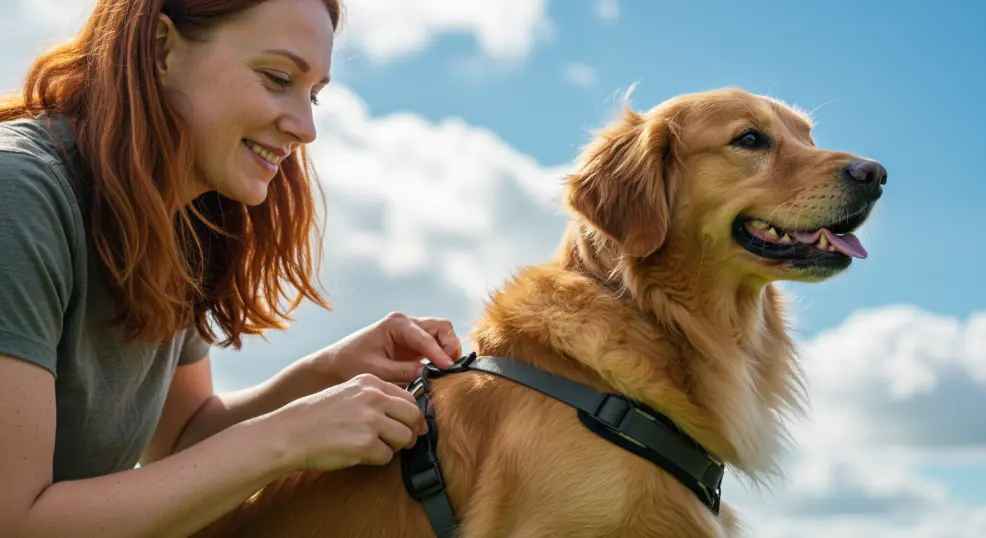
Collars: The Classic Choice
Collars are the oldest and most common form of gear. They’re simple, easy to use, and essential for holding ID tags. When people think of harnesses collars and leashes for dogs, the basic collar is usually what comes to mind first.
- Best for: Smaller, calmer dogs or those already trained not to pull.
- Types: Flat collars, martingale collars (great for Greyhounds and escape artists), and rolled leather collars for long-haired breeds.
- Downside: Not great for dogs that pull hard, as collars can put pressure on the trachea and cause coughing or injury.
Relatable example: My neighbor’s Beagle wears a martingale collar because he’s a bit of a Houdini. A flat collar slipped right off his head one day, and he was sprinting down the street. With the martingale, that hasn’t happened again.
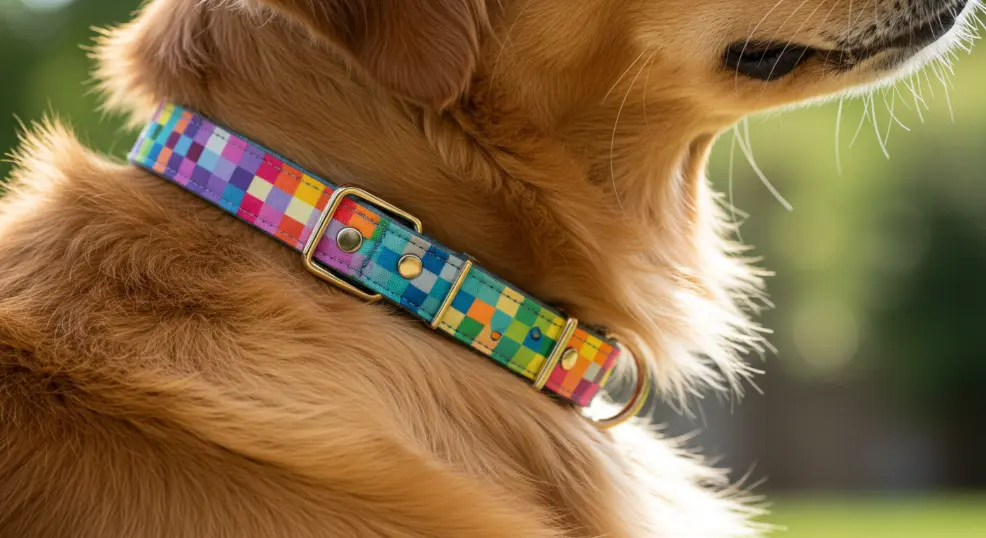
Harnesses: Comfort and Control
Harnesses are becoming more popular than collars, especially in big cities where walks are long and distractions are everywhere. When you’re looking at harnesses collars and leashes for dogs, harnesses often stand out because they spread pressure across the chest and shoulders instead of the neck.
- Best for: Dogs that pull, puppies in training, brachycephalic breeds like Pugs or Bulldogs.
- Types:
- Front-clip harnesses: Good for training dogs that pull.
- Back-clip harnesses: Comfortable for everyday walking.
- Dual-clip harnesses: The best of both worlds.
- Downside: Some harnesses are tricky to put on, and if they don’t fit properly, dogs can wiggle out.
Example: My Golden Retriever mix pulls like a sled dog whenever he sees squirrels. A front-clip harness cut down his pulling by at least 60%. Walks became less of an arm workout and more of a bonding time.
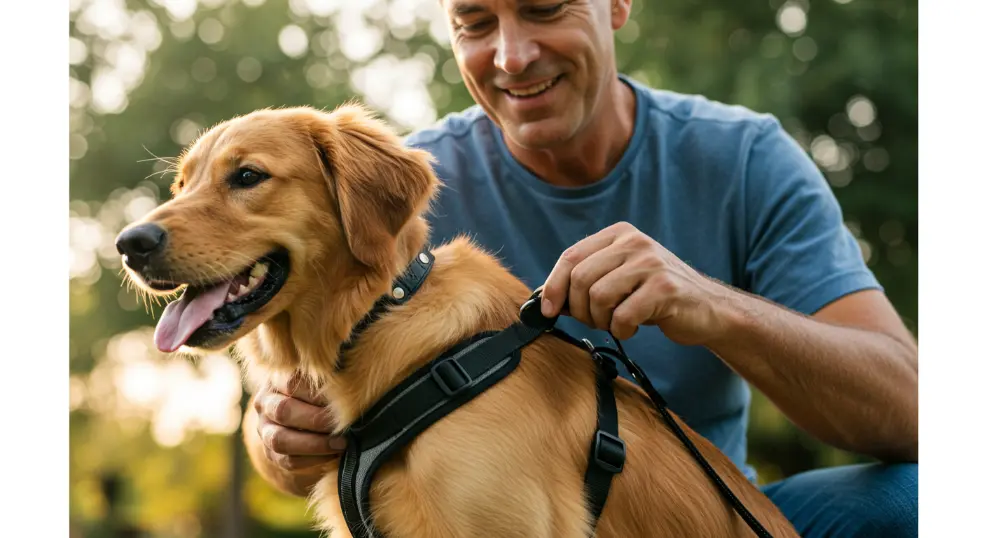
Leashes: Your Connection to the World
Leashes are the unsung heroes of dog gear. Without them, collars and harnesses wouldn’t mean much. When considering harnesses collars and leashes for dogs, think of the leash as the steering wheel.
- Standard leash (4-6 feet): Best for everyday walks.
- Retractable leashes: Controversial. They give dogs more freedom but can cause accidents if dogs suddenly dart out.
- Hands-free leashes: Popular for joggers or people who like to keep their hands free.
- Training leashes (long line): Perfect for recall training in open areas.
Real-life example: I once tried a retractable leash with my Husky mix. He ran full speed and nearly yanked me off my feet. Switched back to a sturdy 6-foot nylon leash and it was like night and day.
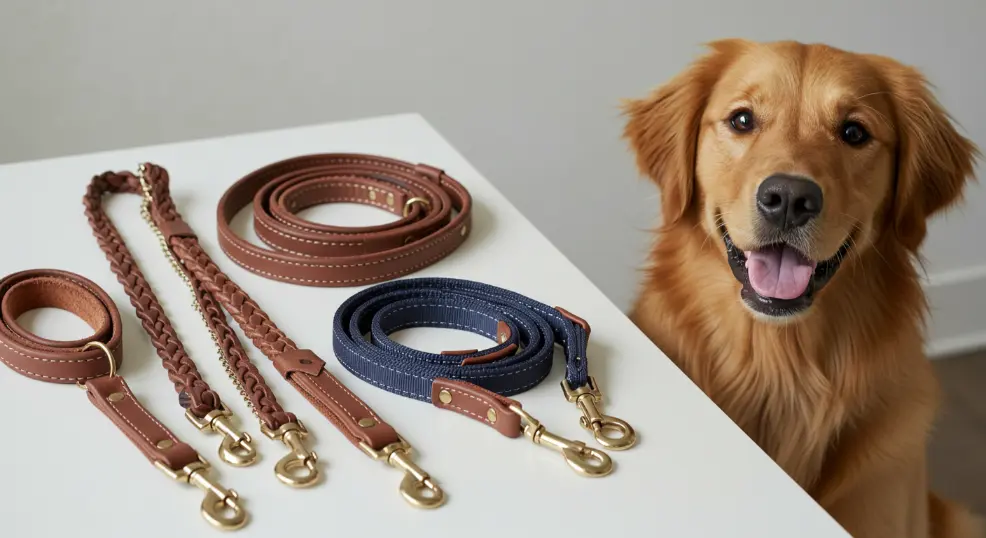
Safety Tips for Using Gear
Harnesses collars and leashes for dogs aren’t just about picking the right one, it’s about using them correctly.
- Always check for wear and tear. Frayed leashes break more often than you’d think.
- Make sure harnesses fit snugly but not too tight. You should fit two fingers under the straps.
- Collars should never be so loose that they slip over the head.
- Never leave dogs unattended with a harness or collar on, as they can get stuck.
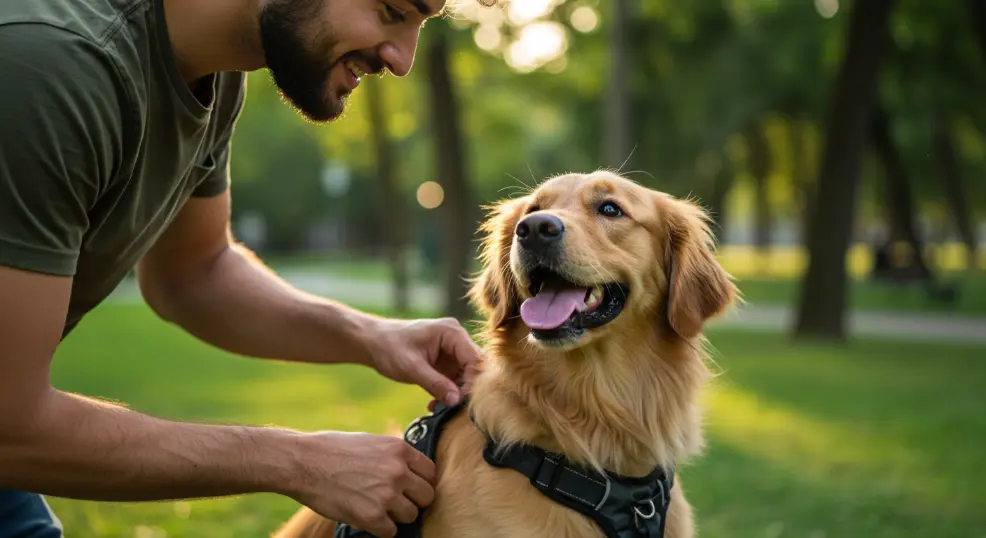
Matching Gear to Breed and Personality
Not every dog will thrive with the same setup. Huskies, for example, are pullers by nature — a harness with a front clip works best. Greyhounds, with their narrow heads, are safer in martingale collars. Tiny Chihuahuas often feel secure in soft padded harnesses. Choosing harnesses collars and leashes for dogs means considering both breed traits and your dog’s personality.
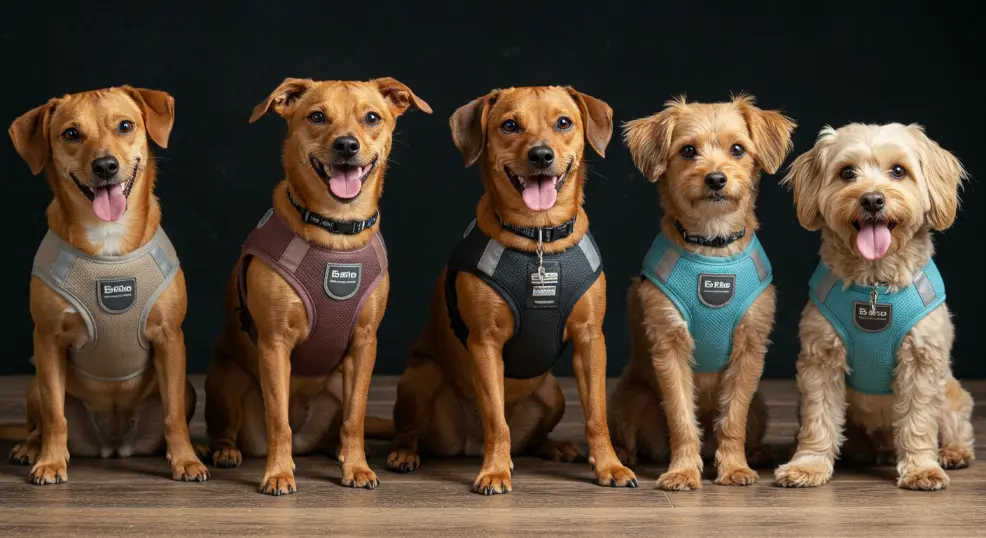
FAQs About Harnesses, Collars and Leashes for Dogs
1. Is a harness better than a collar?
For pullers or dogs with breathing issues, yes. For calm, well-trained dogs, collars work fine.
2. Can my dog wear a harness all day?
No, harnesses should be removed at home to prevent skin irritation.
3. What’s the safest leash for dogs?
A standard 6-foot nylon or leather leash is usually the safest.
4. Are retractable leashes bad?
They’re not “bad,” but they can cause accidents if not used carefully.
5. What’s the best gear for puppies?
A soft harness with a lightweight leash helps train without hurting their neck.
6. Can collars hurt my dog?
Yes, especially if your dog pulls hard. That’s why many vets recommend harnesses for pullers.
7. How often should I replace gear?
Check monthly. If you see fraying, replace it immediately.

References
- American Kennel Club (AKC) – Dog Training and Equipment
https://www.akc.org/ - PetMD – Dog Harnesses vs. Collars
https://www.petmd.com/ - ASPCA – Dog Walking Tips
https://www.aspca.org/pet-care - The Spruce Pets – Best Dog Harnesses and Collars
https://www.thesprucepets.com
we have many helpful blog post about Golden Retriever, you might want to check them you.
Husky and Golden Retriever: Can These Breeds Live Together
Golden Retriever Travel Tips: Car Rides, Flights, and Stays
Golden Retriever Haircut Styles Every Owner Should Know






